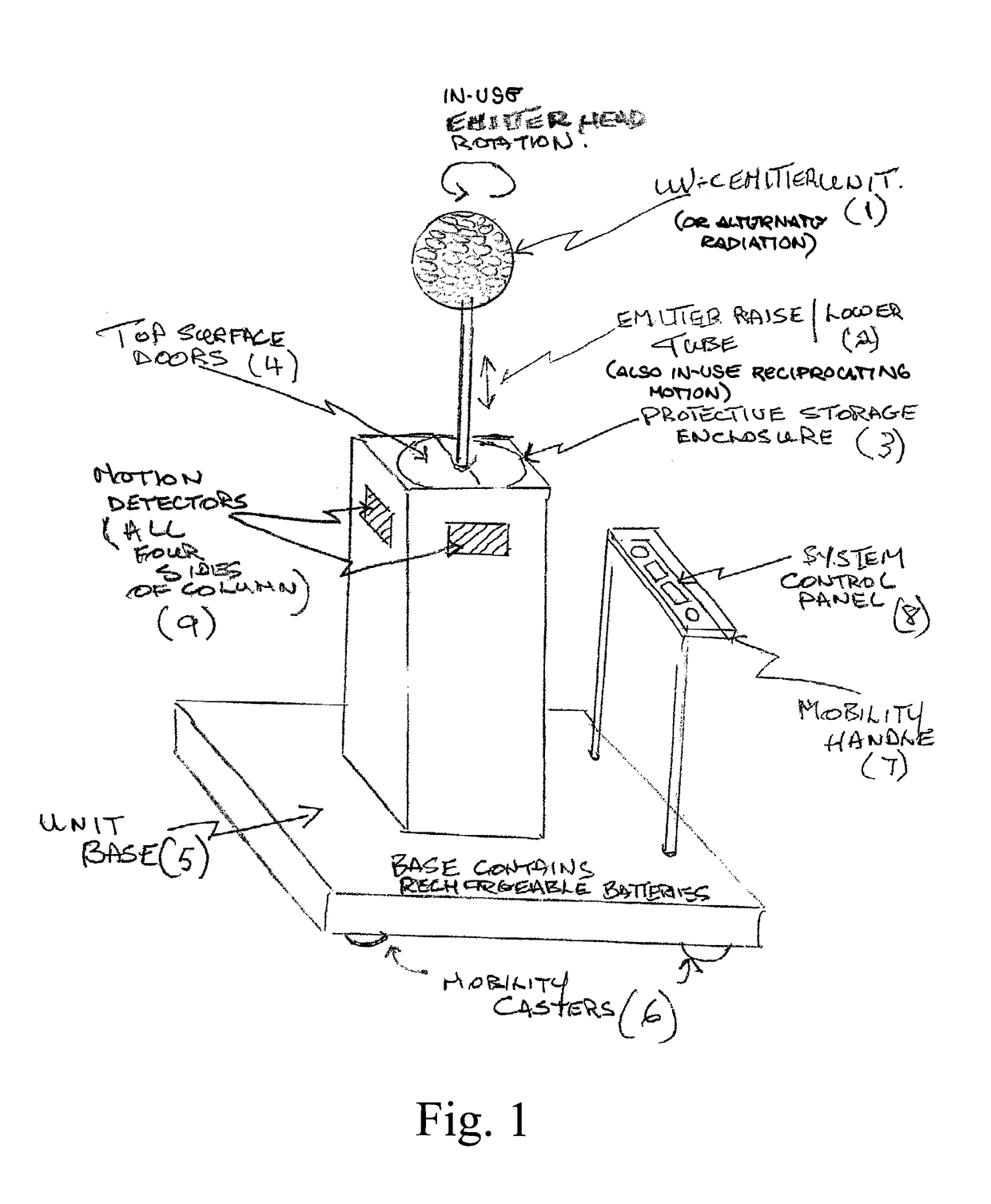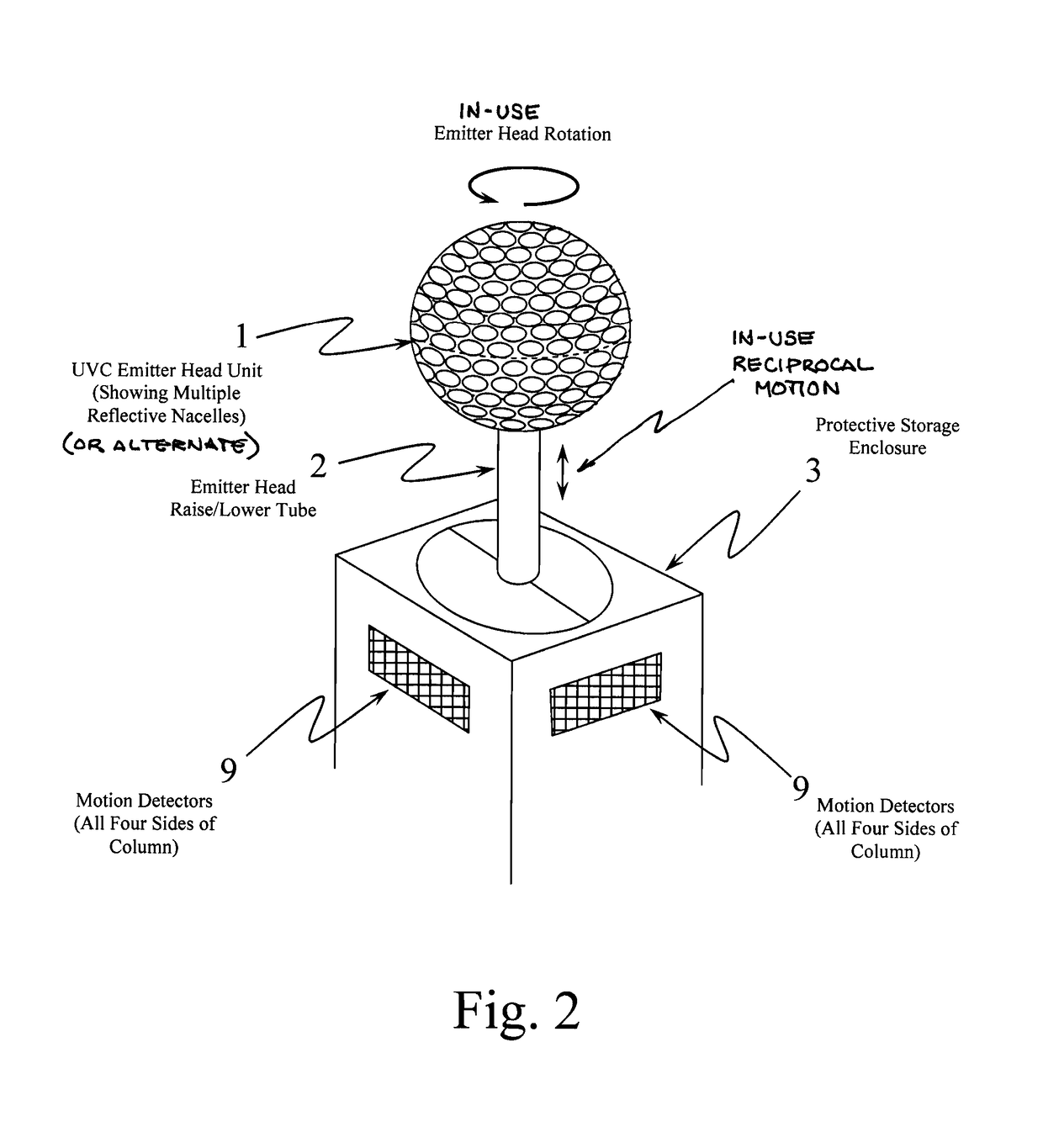Dynamic enhanced and diffuse broad spectrum UVC or alternative controlled ionizing radiation source emitters for mobile and fixed placement disinfection of clinical surfaces
a broad spectrum, ionizing radiation source technology, applied in diffusing elements, lighting and heating apparatuses, instruments, etc., can solve the problems of compromising effective disinfection, compromising effective disinfection, repositioning during use is costly and/or disruptive, etc., and achieves enhanced energy diffusion
- Summary
- Abstract
- Description
- Claims
- Application Information
AI Technical Summary
Benefits of technology
Problems solved by technology
Method used
Image
Examples
Embodiment Construction
[0027]FIGS. 1 & 2 show a general, and close-up view of a free-standing, mobile embodiment of the device, where (1) is a spherical rotatable UV-C emitting structure whose surface consists of densely packed reflective nacels incorporating UV-C energy emitting LEDs or equivalent, concurrent with white light emitter components. Structure (1) is connected to, and supported by, support tube (2), the lower end of which descends into vertical enclosure tower (3), which also functions as a protective enclosure for spherical UV-C emitter (1) when not in use in conjunction with top surface retractable enclosure doors (4). Vertical enclosure tower (3) also contains embedded motion detection sensors (9) on all four sides.
[0028]Vertical enclosure tower (3) is, in turn, supported by, and attached to unit base structure (5), which permits device mobility through casters (6). Base structure (5) also contains internal rechargeable battery / AC line driven system power supplies.
[0029]Operator mobility c...
PUM
| Property | Measurement | Unit |
|---|---|---|
| time delay | aaaaa | aaaaa |
| wavelengths | aaaaa | aaaaa |
| energy diffusion | aaaaa | aaaaa |
Abstract
Description
Claims
Application Information
 Login to View More
Login to View More - R&D
- Intellectual Property
- Life Sciences
- Materials
- Tech Scout
- Unparalleled Data Quality
- Higher Quality Content
- 60% Fewer Hallucinations
Browse by: Latest US Patents, China's latest patents, Technical Efficacy Thesaurus, Application Domain, Technology Topic, Popular Technical Reports.
© 2025 PatSnap. All rights reserved.Legal|Privacy policy|Modern Slavery Act Transparency Statement|Sitemap|About US| Contact US: help@patsnap.com



